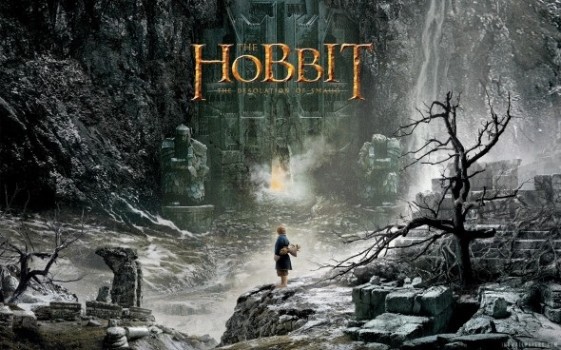The Hobbit Doesn’t Come up Short

December 17, 2013
Writer and director Peter Jackson’s movie adaptation of J.R.R Tolkien’s fantasy epic The Hobbit was released midnight on Friday, December 13th. Although the newest installment of Jackson’s Hobbit trilogy is admittedly a significantly superior film to its predecessor, it is not particularly difficult to improve upon the travesty that was The Hobbit: An Unexpected Journey.
One of the most glaring problems with the movie is that most of it is so far away from the actual Hobbit story that Tolkien fans will inevitably leave the theatre with a profound sense of disappointment, no matter how good it was as a standalone movie. Almost every scene in the film was reliant upon the pointless and completely made up subplot of Azog the Defiler (Manu Bennett), including the other completely made up subplots of the shadowy and not-so-mysterious Necromancer (voiced by Sherlock’s Benedict Cumberbatch) and Legolas (Orlando Bloom) and member of his guard, Tauriel (Evangeline Lilly).
Despite the absolutely ridiculous amount of creative liberty Peter Jackson took with The Hobbit, there were, in fact, a few details about the film that left a positive impression. Jackson manages to impress yet again with his absolutely beautiful depiction of Tolkien’s Middle-earth, with dark decrepit forests, stunning Elven lands, and the dusty yet glorious halls of Erebor.
Along with his fantastic world-building, Jackson’s ability to select the best possible cast to depict our seemingly haphazard heroes once again displays his superb directing skills. Martin Freeman’s Bilbo is a true, and believable, fish out of water as he somehow manages to fumble his way through the journey to Erebor and into our hearts. Along with the awkward hobbit is the displaced dwarven prince, Thorin Oakenshield, portrayed by Richard Armitage. It is almost painful to watch as Thorin becomes a darker version of the honourable and charismatic dwarf we met in The Hobbit: An Unexpected Journey because no one wants to see a true hero and leader become a cynically misguided pseudo-villain. It is easy to sympathize with many characters, important and non, not only because of the hardships they must face as they attempt to reclaim their home, but because of the wonderful actors who portrayed them.
Jackson also manages to touch on a few topics that most writers, directors, and producers tend to shirk away from, such as feminism and racism, with his surprisingly welcomed original character, Tauriel.
No matter what Jackson did that actually managed to impress, however, it is impossible to ignore the story’s reliance on fabricated subplots and CGI. The subplots are slightly forgivable simply because they make the storyline more exciting and fluid, but the amount of CGI and sped-up frames is truly painful.
Even though the landscape and buildings of The Desolation of Smaug are inarguably beautiful, they were not up to the standard of the award-winning Lord of the Rings trilogy. Simple things like being less CGI reliant and slowing down the faster-than-average frames would have made the scenes truly breath-taking.
Despite all of the ups and downs of the newest Hobbit film, there is one thing that die-hard Tolkien fans and people new to the franchise can agree on: the ending was insanely frustrating.
For the people who have not read Tolkien’s work, they have no idea what to expect in the next movie, and would like nothing more than to hunt Peter Jackson down and interrogate him about what happens next.
All in all, The Hobbit: Desolation of Smaug is worth watching at least once, and is admittedly better than the first Hobbit film, but if Peter Jackson gets the idea to make a trilogy adaptation of The Silmarillion, I have no doubts that Tolkien fans will be lighting torches and sharpening pitchforks.

